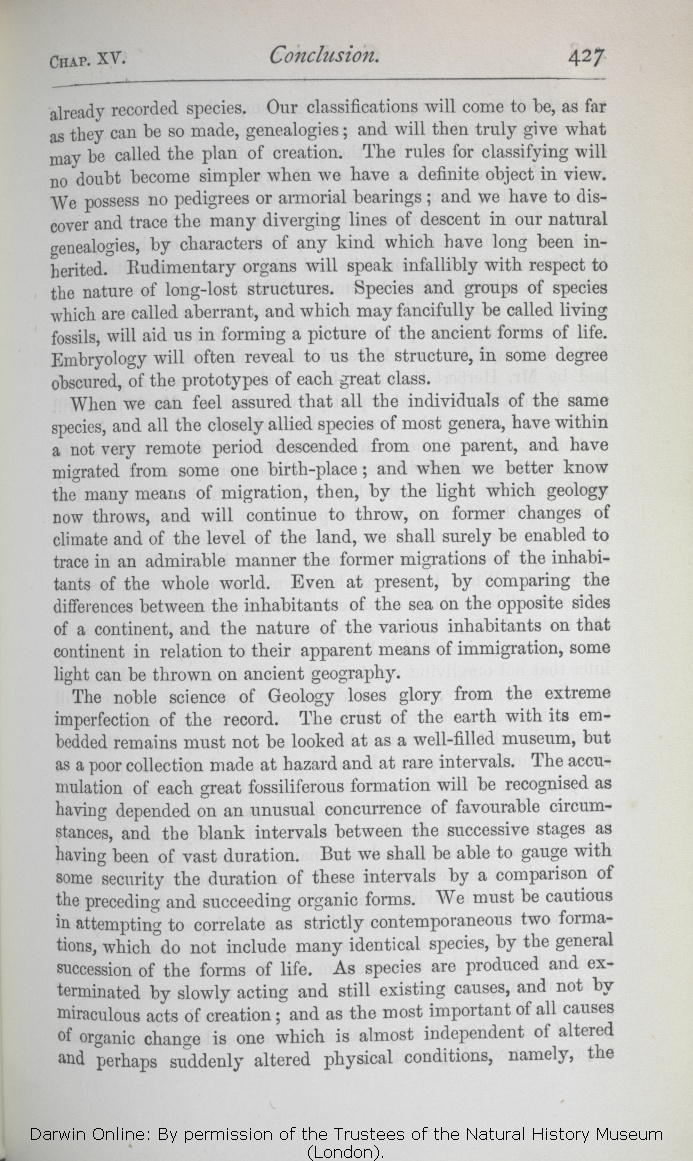of already recorded species. Our classifications will come to be, as far as they can be so made, genealogies; and will then truly give what may be called the plan of creation. The rules for classifying will no doubt become simpler when we have a definite object in view. We possess no pedigrees or armorial bearings; and we have to discover and trace the many diverging lines of descent in our natural genealogies, by characters of any kind which have long been inherited. Rudimentary organs will speak infallibly with respect to the nature of long-lost structures. Species and groups of
species | species 1872 | | species, 1859 1860 1861 1866 1869 |
| often reveal 1866 1869 1872 | | reveal 1859 1860 1861 |
|
|
When we can feel assured that all the individuals of the same species, and all the closely allied species of most genera, have within a not very remote period
..| ..... 1860 1861 1866 1869 1872 | | de- 1859 |
| descended 1860 1861 1866 1869 1872 | | scended 1859 |
| birth-place; 1872 | | birthplace; 1859 1860 1861 1866 1869 |
| between 1872 | | of 1859 1860 1861 1866 1869 |
| on 1872 | | of 1859 1860 1861 1866 1869 |
|
|
The noble science of Geology loses glory from the extreme imperfection of the record. The crust of the earth with its
imbedded | imbedded 1872 | | embedded 1859 1860 1861 1866 1869 |
| favourable circumstances, 1869 1872 | | circumstances, 1859 1860 1861 1866 |
| do not include many 1869 1872 |
| include few 1859 1860 1861 1866 |
| the 1869 1872 | | their 1859 1860 1861 1866 |
| creation; 1872 | | creation 1859 1860 1861 1866 1869 |
| OMIT 1872 |
| by catastrophes; and 1859 1860 1861 1866 1869 |
|









